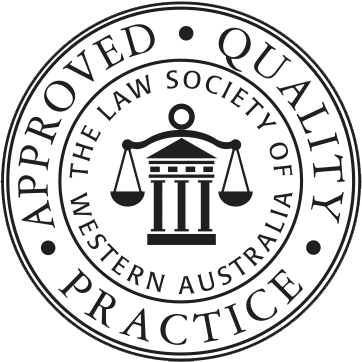Proceedings Update – Charisteas v Charisteas
In advance of a re-Trial ordered by the High Court of Australia, the Family Court of Western Australia was asked to determine two associated Applications brought by the Husband, namely:
- That Firm Y, and Mr P and Ms D both of Counsel, be restrained from acting for the Wife in circumstances where they also represented the Wife’s litigation funder, AF Business Funding Limited; and
- That Orders requiring the Husband to pay the Wife’s lawyers a sum equivalent to the sum paid to his own lawyers (“the dollar-for-dollar order”) be set aside.
The decisions in respect of both Applications were themselves the subject of the Husband’s Appeal to the Federal Circuit and Family Court of Australia summarised on this page.
For context, below is a chronology of the long and not uncomplicated history of the proceedings prior to the Husband’s recent Appeal to the Federal Circuit and Family Court of Australia:
Chronology
- The proceedings date back to 2006. In total there have been 24 judgements published in the Family Court of Western Australia, the Federal Circuit and Family Court of Australia (formerly the Family Court of Australia) and the High Court of Australia respectively.
- In 2011, property settlement Orders were made under Section 79 of the Family Law Act 1975 (Cth) which among other things provided for the early vesting of a Trust (“the early vesting Orders”).
- In April 2013, the Full Court of the Family Court of Australia set aside the early vesting Orders on the basis that the Husband’s mother, a general beneficiary of the Trust, had been denied procedural fairness.
- It was subsequently determined by a Judge of the Family Court of Western Australia that the 2011 property settlement Orders (which included the early vesting Orders) were not in fact Final Orders, and consequently the Court retained jurisdiction to make property settlement Orders under Section 79 of the Act.
- On 3 August 2016, after various procedural issues had been litigated, the matter proceeded to Trial in the Family Court of Western Australia and on 12 February 2018 (after a protracted Trial and a lengthy delay by the Trial Judge thereafter) Judgement was delivered.
- That Judgement was appealed by the Husband for reasons which included alleged apprehended bias on the part of the Trial Judge arising from undisclosed contact between His Honour and Junior Counsel for the Wife, Ms D.
- The Appeal was dismissed by the majority of the Full Court of the Family Court of Australia (as it was then known) with Judgement delivered on 10 July 2020.
- The Husband successfully appealed that decision to the High Court of Australia, which dismissed the earlier property settlement Orders and remitted the matter back to the Family Court of Western Australia for re-Trial.
- For a summary of the background and outcome of the High Court Appeal itself – which was based upon the Trial Judge’s undisclosed and private liaisons with the Wife’s Counsel, Ms D, both during Trial and throughout the period prior to Judgment being delivered – see Milos Supljeglav’s informative article: High Court Appeal on Ground of Apprehended Bias – Charisteas v Charisteas.
- As noted above, in advance of the re-Trial ordered by the High Court of Australia, the Family Court of Western Australia determined two associated Applications brought by the Husband. The Husband’s Appeal of those decisions to the Federal Circuit and Family Court of Australia (being the dismissal of his Application to restrain the Wife’s legal representatives from also acting for her litigation funder and dismissal of his Application to set aside a “dollar-for-dollar” order) is summarised below:
The Injunctions sought against Firm Y & Mr P
The Husband sought injunctions restraining Firm Y and Mr P from continuing to act for the Wife on the basis that also acting on behalf of AF Business Funding Limited placed them in a position of conflict.
The Wife contended that there was no conflict because her interests and those of AF Business Funding Limited were “closely aligned” and that their common objective was to “maximise the value of the assets and financial resources to be retained” by her. In the alternative, the Wife asserted that both she and AF Business Funding Limited had given “informed consent” for their legal representatives to act for each of them, notwithstanding any actual conflict.
Relevant Principles
The Court determined that the correct test to be applied was:
Whether a fair-minded, reasonably informed member of the public might conclude that the proper administration of justice requires that a solicitor be prevented from acting in the interests of the protection of the integrity of the judicial process and the appearance of justice.
The Court also cited with approval the comments of Thomas J in Kooky Garments Ltd v Charlton that:
The Court is entitled to assume that solicitors and counsel appearing before it possess [that] independence…and must ensure that they do not appear in a matter in which they have an actual or potential conflict of interest or where, by reason of their relationship with their client, their professional independence can be called in question.
In applying the above tests, the Court found that there was indeed a conflict of interest, given:
- The Wife by that stage owed AF Business Funding Limited at least $3.6m in legal fees and AF Business Funding Limited had a vested interest in ensuring that the value of any assets she received by way of matrimonial property settlement was available to repay the debt (i.e., that such entitlements were paid to the Wife principally in the form of cash or liquid assets);
- In contrast, the Wife’s interests lay in maximising her non-property or non-cash entitlements which would potentially be beyond the reach of her creditors, including by way of superannuation entitlements, periodic spousal maintenance (as opposed to lump-sum spousal maintenance) or assets which were held in a discretionary trust; and
- The conflict rises to the level of actual conflict (rather than merely “potential” conflict) because legal advisors substantially control the subject matter and direction of settlement negotiations and potential alternative structures (and the Family Court Rules require parties to explore non-litigious resolutions both prior to and during proceedings).
Informed Consent
With respect to the argument that both the Wife and AF Business Funding Limited had each purportedly provided “informed consent” to their legal advisers acting for each of them, the Court held that there was no basis for such a finding given the actual legal advice received was not in evidence before the Court.
The injunction sought against Ms D
Based upon the same principle in Kooky Garments Ltd & Charlton (per above), the Court determined that the conduct of the Trial Judge and Ms D in the substantive proceedings before the Family Court of Western Australia (being the subject of the apprehended bias Appeal to the High Court of Australia) placed Ms D in a position of conflict in circumstances where:
- The Wife could potentially join in a claim for costs against Ms D (arising from her earlier conduct); and
- Ms D had a professional and financial interest in the outcome of the proceedings and would likely be required to give evidence.
The Dollar-for-Dollar Order
The Husband appealed the “dollar-for-dollar” order in part on the basis that it had the effect of relieving the financial burden of not just the Wife but also AF Business Funding Limited, in circumstances where the same legal representatives acted for both parties.
The Court agreed, finding that it would be very difficult to justify what would in effect amount to the making of a litigation funding Order in favour of a commercial litigation funder, and held that the failure of the primary Judge to refer to such matters in her Written Reasons constituted an error in the exercise of her discretion.
Additionally, the Court found that the injunctions restraining the Wife’s legal representatives from acting for her meant there was a considerable change in relevant matters concerning the funding of her litigation which required further evidence and reconsideration.
Key Takeaways
- A conflict of interest arises where a fair-minded, reasonably informed member of the public might conclude that the proper administration of justice requires that a Solicitor be prevented from acting for a party.
- Solicitors and Counsel must ensure they do not appear in a matter in which they have an actual or potential conflict of interest, or where their professional independence can be called in question.
Let’s meet, and figure it out
For practical advice about what you should do next, please call to arrange a no-obligation initial consultation.

